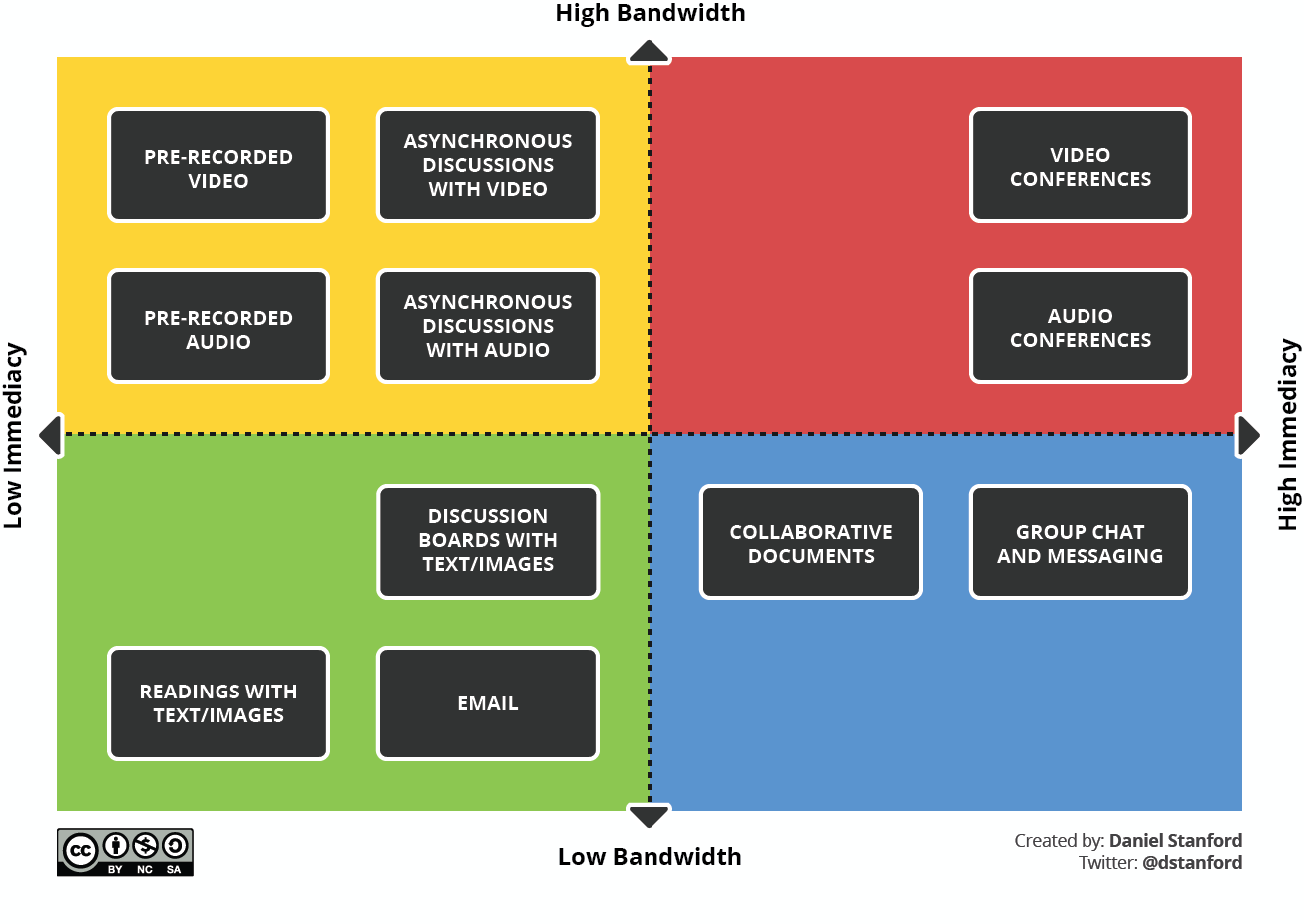Designing the ‘experience’, not the lecture.
Designing a learning experience that extends and enhances the classroom.
Zoom, Zoom and a bit more Zoom?
Zoom has seemingly become synonymous with synchronous learning – a classroom environment that goes beyond geographical boundaries and enables learning that goes beyond bricks and mortar. In a world where travel no longer exists (for the moment at least), platforms such as Zoom have afforded flexibility for Universities to continue teaching and enable students to engage with education.
And with good reason. Synchronous learning makes a lot of sense to people. In the context of 2020, everyone had a huge amount to adjust to. A structure and routine enabled us to maintain a status quo when it was sorely needed. And, in actual fact, it’s more than just a sense of normality, it provides a space for our faculty and students to meet, discuss, collaborate and build relationships. But, let’s face it – the not-so “elephant in the room” – video calls can be exhausting, and they’re not necessarily the best option for learning.
But what is the best option? We’re certainly not going to turn our back on the online classroom, and we would never advocate doing so. However, there are options to optimise that time and enhance the learning at the same time.
Factoring for flexibility
One of the ‘issues’ with live teaching is exactly that - it’s live. It doesn’t provide any flexibility for learners, or faculty for that matter, to disconnect themselves from being online. We measure engagement in physicality, and we expect learning to take place in the immediacy. Why? Because it’s something that we intrinsically link to face-to-face learning in the physical space. It’s for this reason that Daniel Stanford devised the Bandwidth Immediacy Matrix; so that we can recognise that immediacy is in fact a limited resource.

Bandwidth Immediacy Matrix - Daniel Stanford, Director of Faculty Development and Tech Innovation, DePaul University’s Center
Before we go further, let’s not forget, the purpose of asynchronous isn’t to reduce the amount of face-to-face time (online or otherwise) we spend with students, but instead to complement it. And it certainly isn’t about creating a situation where we’re available all day, every day. It’s about providing opportunities for students to engage with learning in their own time, reflect on their existing knowledge and perceptions, analyse a case and build a response beyond the boundaries of the classroom.
However, when we try to design learning in the online environment, we often revert to a replication of the classroom experience. It’s what we know, and what we know works. So, we think of video as the go-to tool because we focus on our ability to hear and see our students and interact in real-time. But, as Daniel suggests, there are two key factors that can make this approach problematic:
- Bandwidth – reliance on technology and infrastructure; and
- Immediacy – the expectation of immediate results.
We could extend this even further. Bandwidth is not simply measured in technical terms, but in our ability to engage with the activities asked of us. Students and faculty have prior commitments. They may have come from a full day’s worth of work or classes. Sometimes, we’re simply not the best version of ourselves. In terms of immediacy, we should take a step back and appreciate what skills and abilities we’re instilling in our students. It’s a learning environment, and there should be opportunities to step away and think about a task without a deadline clock running down.
Take another look at the Matrix, it presents just some of the approaches you could take and does so in their simplest form. There’s a huge amount of potential behind each of these elements. It’s really just about taking some time out to consider whether your Zoom room is the only way to deliver your course. Try to forget the technology for a moment and consider your learning outcomes. You might find the simplest approach can be just as effective.
Virtual or Hybrid, blend the learning
Blended learning is a recognised teaching and learning approach, but more often than not it leads teachers to create a series of instructional videos. Now, that’s not to say there isn’t a time and place for didactic face-to-camera instruction – there is. However, there are also a lot of other options to support students in their learning and offer feedback.
So, what should you consider when you look at opportunities to blend your learning? The truth is, there’s lots of things to keep in mind. You’ll be driven by the content, the learning outcome and the skills you want your students to demonstrate. But don’t forget about feedback. That’s not to say you need to be providing personalised and individual feedback to each and every student. It’s about providing opportunities for students to explore the goal – the endpoint – where they should aim for and compare that to their current state whilst understanding how to close the gap. It’s an opportunity for students to self-regulate and develop critical metacognitive skills.
In reality, this can be distilled down into relatively simple terms. Yes – you should provide some instruction. Share your knowledge and expertise with students but provide supportive tasks that enable the exploration of a topic and the ability to apply their knowledge. In doing so, students are able to construct an understanding of the topic and formulate their own perspective. They can bring this with them to the synchronous session and you can capitalise on their prior learning, share thoughts and guide the development of their understanding further and further.
How do you blend?
So, what exactly do you do to blend the learning? Have a look at the examples below.
Provide some instruction, but make sure it's necessary
There are lots of ways to instruct students.
- It’s perfectly reasonable to share a video or a slide deck with students (check here for tips on how to approach this). You could even embed activities within them (contact Learning Innovation for help).
- Good old-fashioned Reading and Structured activity – be transparent with your students. It’s more than “read Chapter 4”. What are they looking for? Why is it relevant?
- Scenarios and Worked Examples. Ask students to reflect. What did they learn? What might they have done differently? What recommendations would they make?
- Collaboration. Is there an opportunity for students to work together on a problem and present their findings to the class during the next session?
Consider all your options but give them structure.
Create opportunities for feedback
Let students take ownership of their own learning. Providing opportunities for feedback enables students to become self-regulated learners. Nicol & Macfarlane-Dick’s work on Formative Assessment and self-regulated learning has long been a core-reading for any faculty looking to enhance their feedback practice.
- Students are already assessing their own work – give them the support to do it effectively.
- Support the development of metacognitive skills. Enable students to understand how they close the gap between where they are, and where they need to be.
- Recognise that feedback does not always need to be individual and personalised. Provide worked examples, exemplars, and try to correct misconceptions or praise original thoughts to the class as a whole.
Make the most of your class time
You’ve made all the effort to blend your learning. Don’t lecture (at least, not always).
- Set clear objectives for the class
- Create discussions that are engaging, effective and equitable
- Synchronous learning can provide social experiences and build a sense of community, but make sure your sessions are sustainable
- Consider the Seven Learning Principles of How Learning Works. Understand who your learners are, and how you can maintain motivation through to mastery.
A final thought
Ultimately, there’s lots to consider when designing for learning, even more so when you’re in the online space – it’s new to a lot of us. And there’s no correct answer. It’s all about making the most of the opportunities available to you and your students.
Try to explore the whole experience and don’t let a lecture become a proxy for learning.
Photo by Yasmina H on Unsplash

